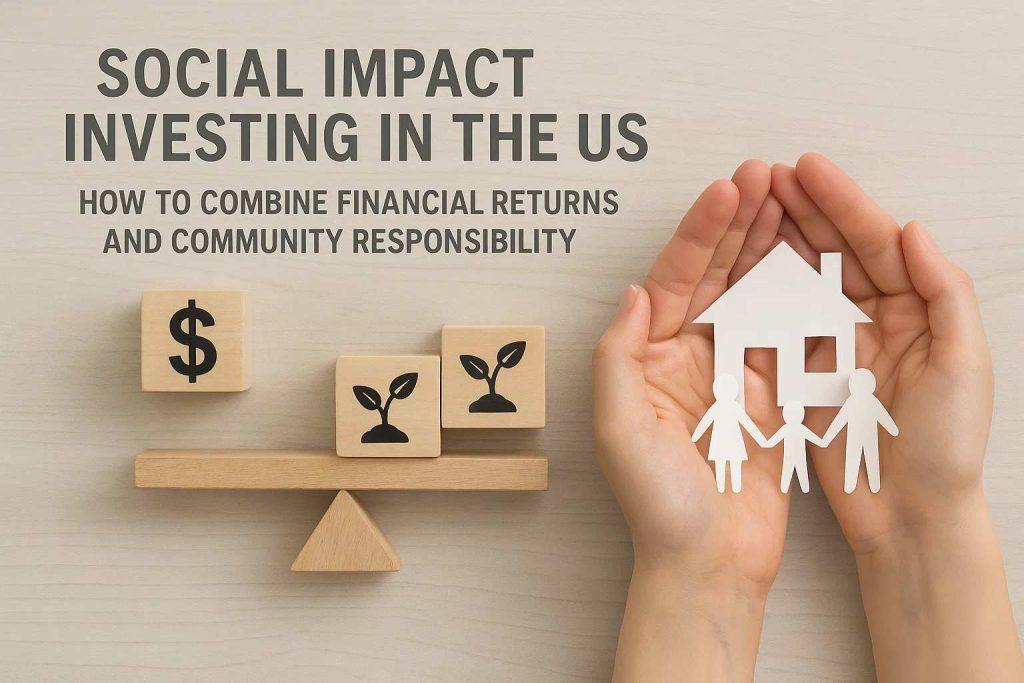In recent years, the concept of investments has expanded far beyond the pursuit of profits. Investors are no longer satisfied with portfolios that only maximize financial gains; many are seeking strategies that also deliver tangible benefits to society.
This growing interest has given rise to what is known as social impact investing, a movement that seeks to merge financial success with ethical responsibility. By doing so, it responds to an increasing demand from individuals, institutions, and communities for businesses and capital flows that serve a broader purpose.
The rise of impact investing in the US

The American financial landscape has played a crucial, pioneering role in shaping the global impact investing movement. This innovative sector—defined by investments made with the intent to generate measurable, beneficial social or environmental impact alongside a financial return—has deep roots in US philanthropy and venture capital. Early pioneers began exploring how to incorporate explicit social goals into traditional investment models during the late twentieth century, often through community development financial institutions (CDFIs) or socially responsible investing (SRI) screens. However, it was only in the past two decades that the field gained widespread traction, moving from a niche concept to a recognized asset class.
The momentum accelerated sharply following the 2008 financial crisis, which highlighted systemic economic and social vulnerabilities and encouraged a broader re-evaluation of capitalism’s purpose. Organizations, specialized funds, and expansive networks have since been established to structure this growing interest and standardize practices. Global institutions like the Global Impact Investing Network (GIIN), though international in scope, have significant influence and founding roots within the US financial sector, focusing on metrics and accountability.
Today, the US now hosts several key elements dedicated to advancing the study and practice of impact investing. These include major annual conferences (like SOCAP and the annual GIIN Investor Forum), a proliferation of specialized funds targeting everything from affordable housing to climate technologies, and academic centers at prestigious universities that are training the next generation of impact financial professionals. This robust infrastructure provides the necessary research, deal flow, and talent pool to scale the market domestically and internationally.
The combination of deep financial expertise (derived from Wall Street and venture capital), a tradition of philanthropy (from private foundations), and a strong culture of entrepreneurship has created a truly fertile ecosystem where capital and conscience converge. This unique American mix allows for the rapid testing of innovative financial structures, making the US a crucial laboratory and engine for the world’s impact investing endeavors. The market continues to evolve, moving beyond merely avoiding harm (SRI) to actively seeking positive, measurable change (Impact Investing).
Community-driven priorities
One of the distinguishing features of impact investing in the United States is its strong emphasis on community needs. Unlike purely profit-driven strategies, this approach actively listens to local stakeholders to identify projects with the greatest potential for long-term positive change.
For example, investments may be directed toward affordable housing initiatives in underserved neighborhoods, renewable energy installations in rural areas, or microfinance opportunities for minority-owned small businesses. These efforts not only yield financial returns but also create ripple effects, such as job creation and social cohesion.
Measuring success beyond profit
For impact investments to remain credible and effective, investors must be able to assess whether their money is truly making a difference. This has led to the emergence of metrics and standards that evaluate both financial performance and social outcomes.
The Global Impact Investing Network (GIIN), among other organizations, has worked extensively to develop frameworks that allow stakeholders to track how investments contribute to goals such as reducing carbon emissions, increasing access to healthcare, or promoting gender equality.
The role of corporate participation
Corporations have also embraced impact investing principles, integrating them into their strategies as part of broader commitments to environmental, social, and governance (ESG) goals. Companies across sectors are directing funds toward initiatives that align with their missions while also addressing pressing social issues. For instance, large financial institutions such as Goldman have developed specialized units that focus exclusively on sustainable finance and social impact opportunities.
Corporate involvement is critical because it brings scale and visibility to impact investing. When major firms dedicate significant resources to projects with measurable social benefits, they set examples for smaller investors and entrepreneurs. Furthermore, such participation signals that impact investing is not a niche activity but rather a legitimate and growing dimension of mainstream finance.
Looking ahead: challenges and opportunities
The future of social impact investments in the United States will likely be shaped by a combination of innovation, regulation, and cultural shifts. On one hand, technological advancements, such as data analytics and blockchain, promise to enhance transparency and accountability, making it easier to track both profits and social outcomes.
Opportunities abound in areas such as climate change mitigation, healthcare access, and education reform. These are sectors where demand for solutions is high and where investments can generate both strong financial returns and profound social benefits. However, challenges such as political polarization, economic inequality, and regulatory complexity may complicate progress.


